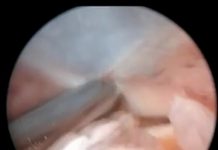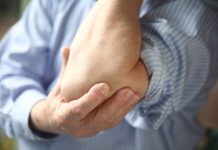It is not known how or why scleroderma disease occurs. The main problem is the thickening of the walls of small arteries transmittin blood to the tissues and the skin. There is no knwon treatment for the disease. Thus, the treatment methods relieving the effects of the problems on the affected organs are used.
Symptoms regarding the sceleton system; pain on the joint, weakness and joint stiffness. The hands are frequently effected by the disease. The joint stiffness and deformity are generally seen on the small joints.
In time, the cutaneous tissue around the fingers gets slowly but progressively thickhenes. Thus, in the early stage of the disease, the fingers seem slim, cylindrical, shiny and stiff. The stiffness and the strain occuring on the skin force the fingers, cause advanced deformity and maket he hand unusuable.
Another problem occuring in the early stage of the disease is the sudden spasm on the veins feding the hand. Accordingly, the blood stream on the fingers decreases. First, the fingers gets white and then blue-pink when the circulation gets normal. The circulatory disorder together with the stiffness of the skin causes ulcer on the fingertips and joints, cangrene and finally the loss of the finger.
Besides, another symptom commonly seen on the hands is the cutaneous and subcutaneous swelling containing calcium. Upon the opening of the sweellings due the strain of the sking, chalk-like discharge may be seen.
The disorder observed on the fingers is caused as the joints cannot stand the strain of the skin. Generally, this long-term condition is resulted with the hand’s shaping like a paw. The strained skin on the twisted joint opens and causes the wounds to occur and the bones to get inflamed. The thumb’s being effected is the biggest problem for the patients. In time, the thumb sticks to the forefinger and caanot open to the out side. This condition making the grasp movement impossible causes serios loss of function.
In the treatment, it is observed that the tools, splints or exercises have limited benefits. In case the disease effects the hands, the main treatment method is the surgical intervention. The aim here is to correct the deformities, prevent the iflammation on the bones and keep the hand usable. Besides, discharging the swellings including calcium and following-up the wounds on the fingerstips are the other issues the hand surgeon should take care of. Differently from the other ligament tissue diseases, the disorder in the blood stream and the strain on the skin tissue are the important factors that may negatively effect the results of the surgical treatment.












